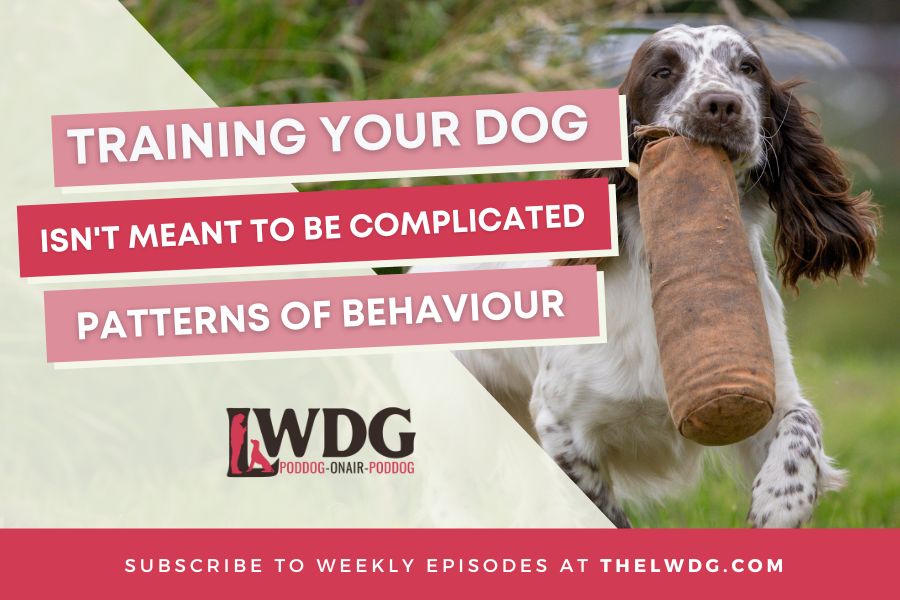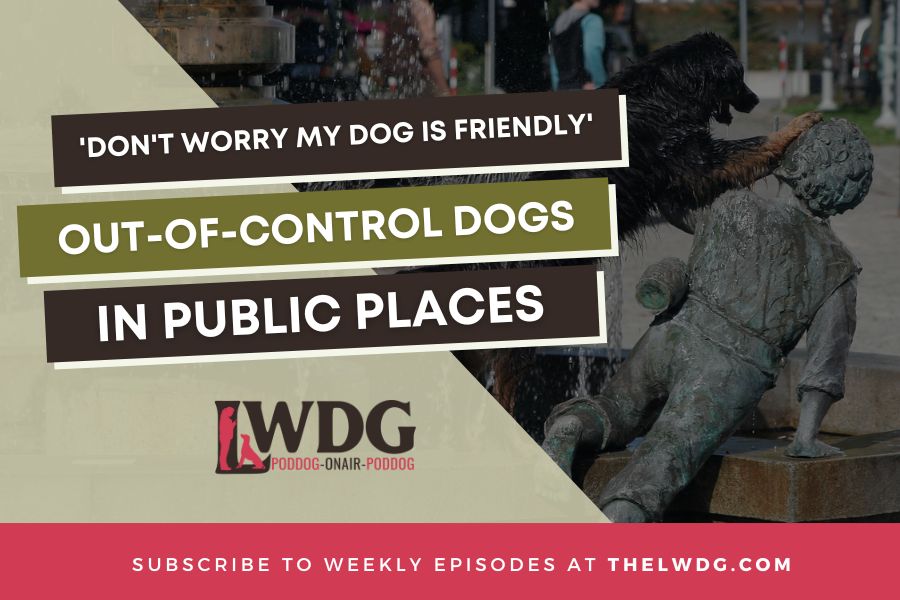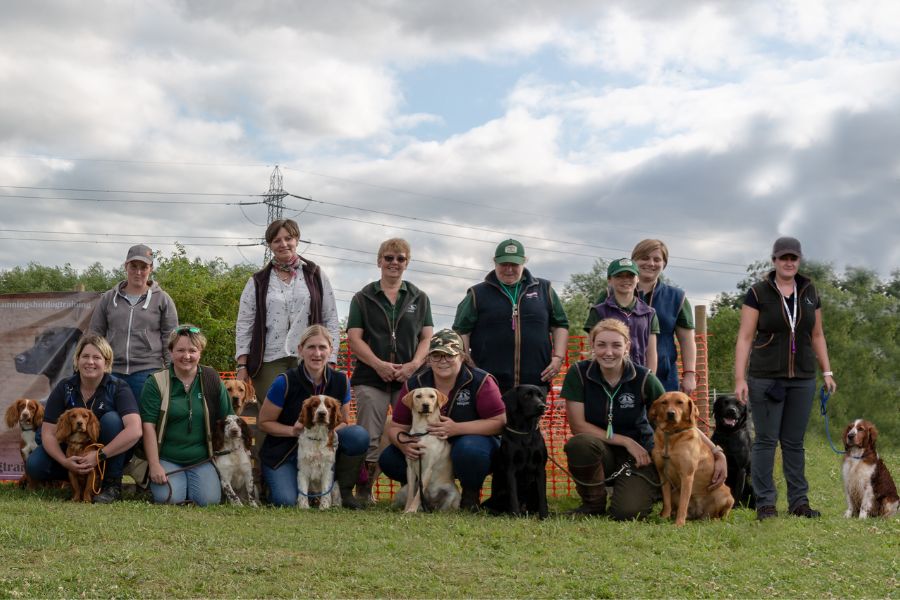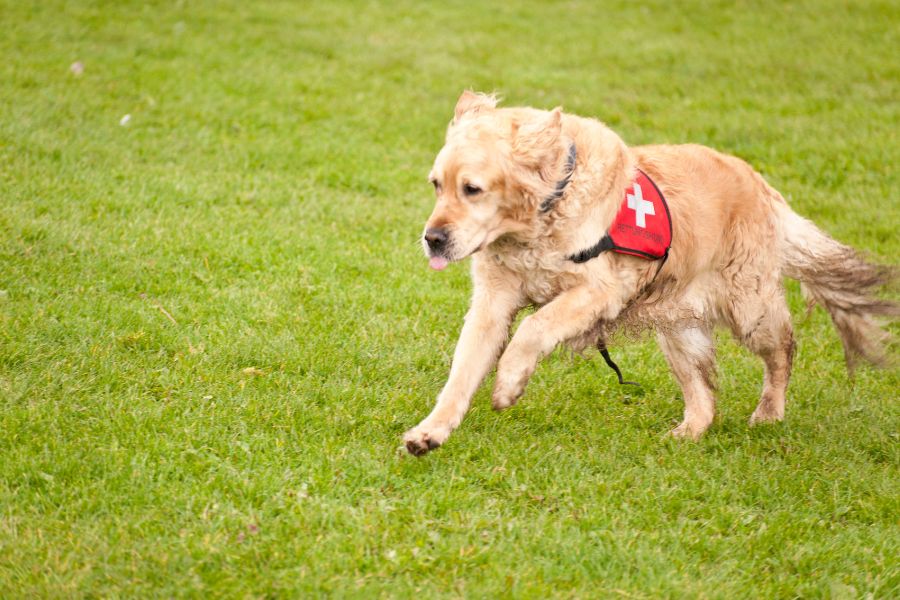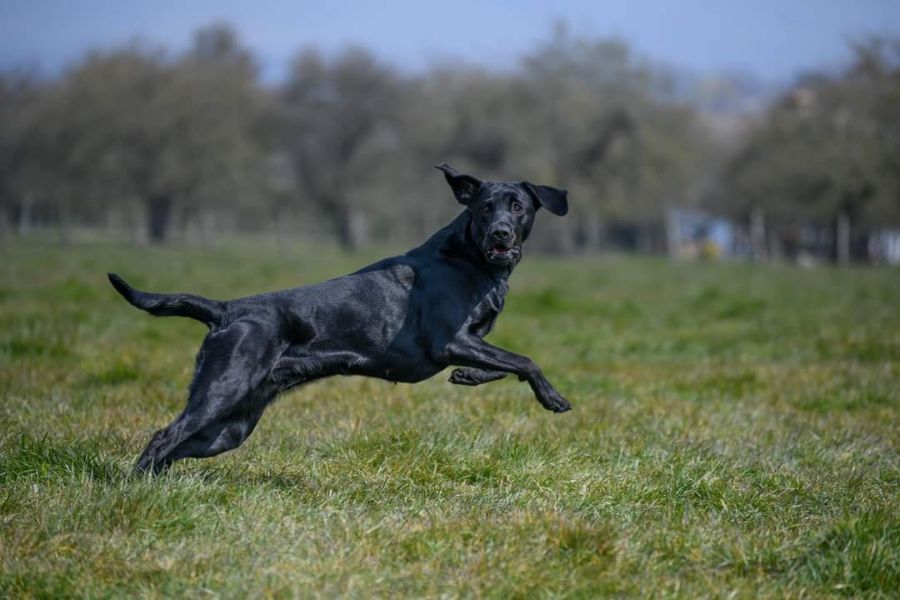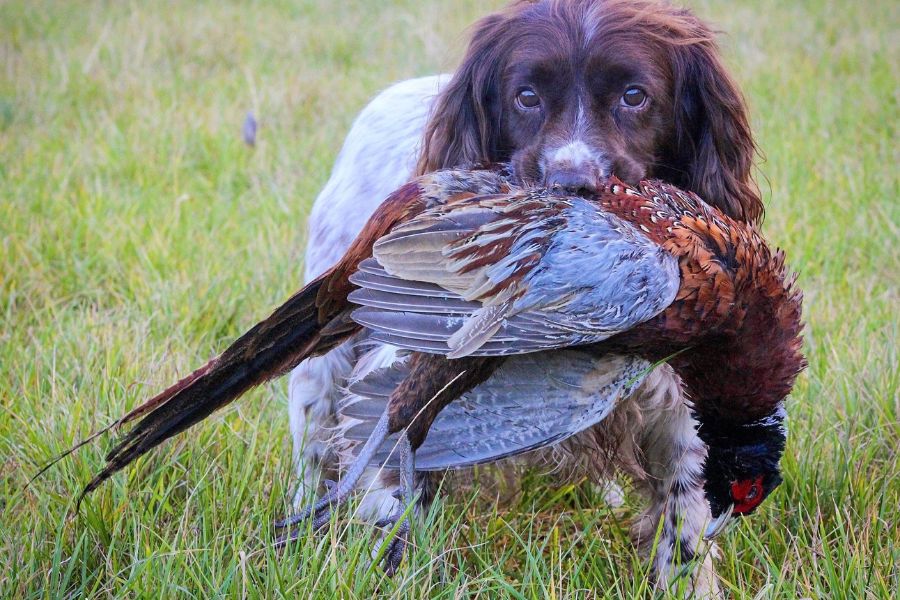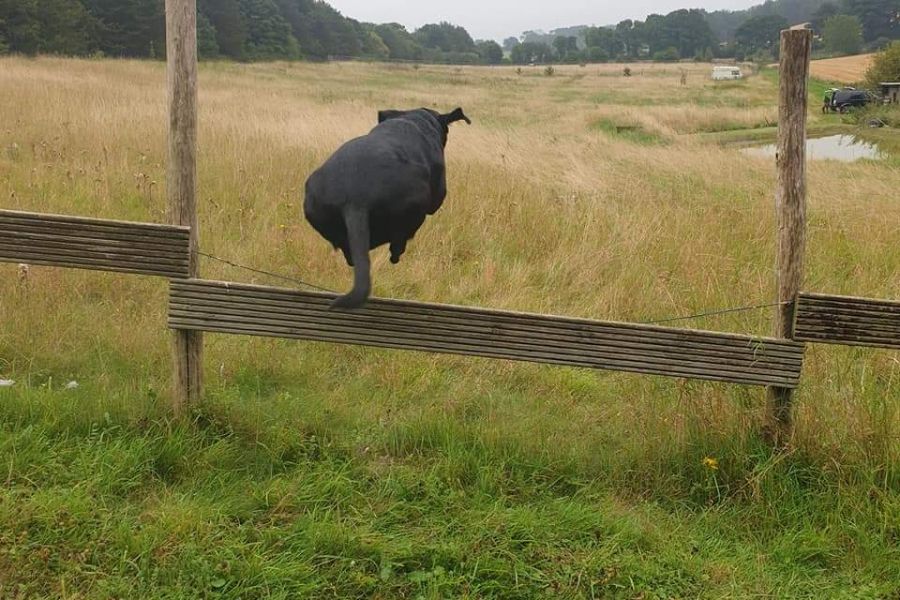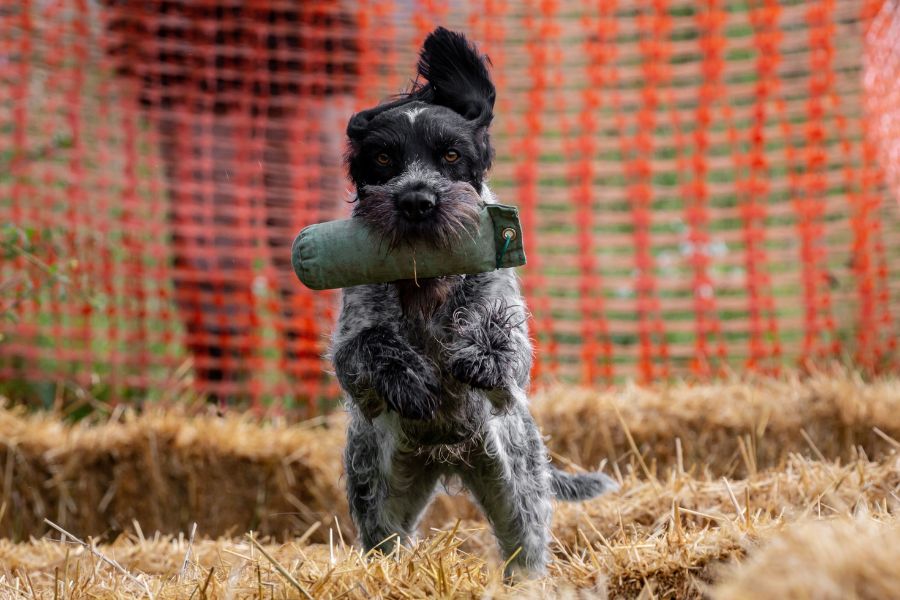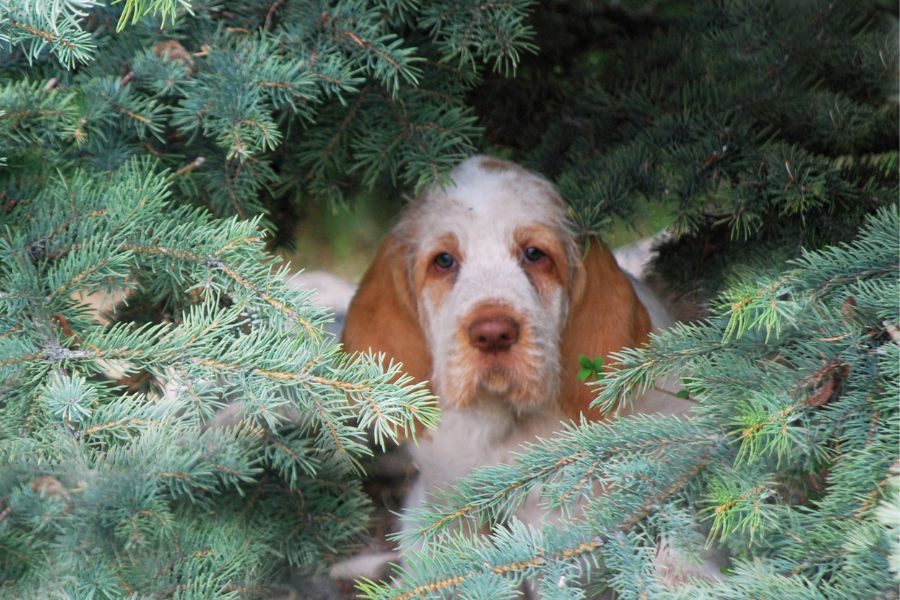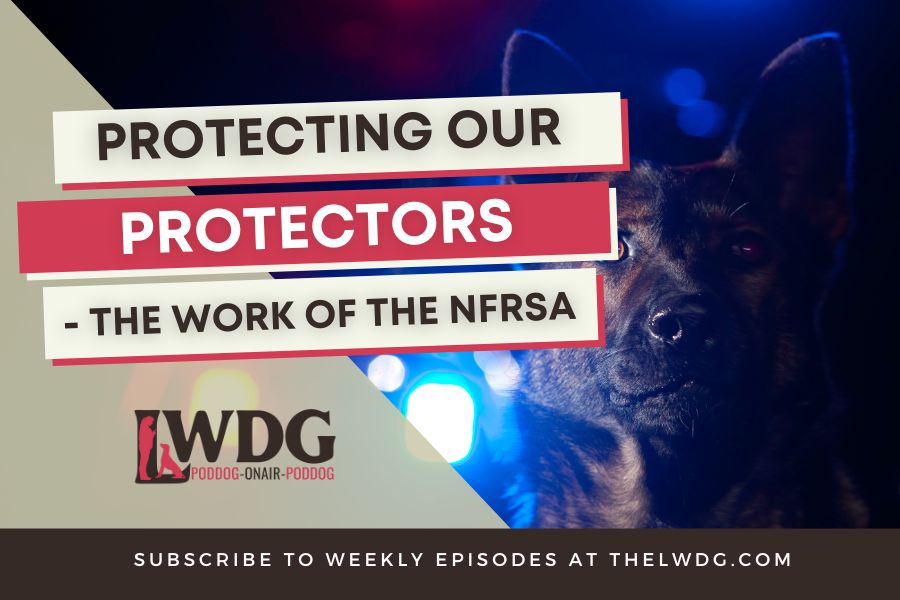Introduction
What is a gundog working test?
A gundog working test competition is an event where gundogs and their handlers compete against each other in a variety of simulated hunting scenarios. These tests are designed to evaluate the skills and abilities of gundogs, including retrieving, pointing, flushing, and game-finding. Competitors are judged on their ability to work effectively with their dogs and to complete tasks quickly and accurately.
Gundog working test competitions are typically held in outdoor settings and are often judged by experienced gundog handlers or trainers. These events provide a great opportunity for gundog enthusiasts to showcase their skills, to learn from other handlers, and to improve the performance of their dogs.
The benefits of competing in gundog working tests
There are several benefits to competing in gundog working tests, including:
- Improved training: Competing in gundog working tests provides an opportunity for handlers to evaluate their dog’s abilities and identify areas for improvement. The feedback and advice received from experienced judges can help handlers to refine their training techniques and develop more effective training plans.
- Socialisation: Gundog working tests provide a great opportunity for handlers to meet and socialise with other gundog enthusiasts. This can lead to the development of new friendships, the sharing of tips and advice, and the opportunity to learn from other handlers’ experiences.
- Increased confidence: Successfully competing in a gundog working test can be a great confidence booster for both the dog and the handler. Achieving a high score or placing in a competition can be a great source of pride and motivation to continue improving and competing.
- Exercise and mental stimulation: Gundogs are active and intelligent animals that require regular exercise and mental stimulation. Competing in gundog working tests provides a fun and challenging way to keep dogs physically fit and mentally sharp.
- Recognition: Winning or placing in a gundog working test can be a great source of recognition and accomplishment for both the dog and the handler. This recognition can lead to opportunities for breeding or training, as well as increased visibility within the gundog community.
Importance of preparation for the competition
Choosing the right competition
Choosing the right gundog working test competition is important for several reasons:
- Skill level: Different gundog working test competitions may have varying levels of difficulty and skill requirements. It is important to choose a competition that matches your current skill level and that of your dog. Entering a competition that is too difficult can be discouraging, while entering one that is too easy may not be challenging enough to push you and your dog to improve.
- Rules and requirements: Each gundog working test competition may have different rules and requirements. Understanding these rules and requirements is crucial to properly prepare for the competition and to avoid disqualification. Different breeds have different rules so check out the rules on the Kennel Club.
- Training focus: Different gundog working test competitions may place emphasis on different skills or areas of training, such as retrieving, pointing, flushing, or game finding. Choosing a competition that aligns with your training focus can help you to showcase your skills and improve in areas where you may need more practice.
- Location and schedule: Choosing a competition that is within a reasonable distance and that fits your schedule is important. Attending a competition that is too far away or that conflicts with other commitments may not be feasible.
- Experience and networking: Some gundog working test competitions may be more prestigious or have a larger community of experienced handlers and trainers. Choosing a competition with a strong community can provide opportunities to learn from and network with others in the field.
Researching different competitions
Researching different gundog working test competitions is an important step in preparing for a competition. Here are some steps you can take to research different competitions:
- Search online: Use search engines to look for gundog working test competitions in your area. You may find information on the competitions’ websites or social media pages.
- Check with gundog organisations: Check with local gundog organisations or breed clubs to see if they are aware of any upcoming competitions. These organisations may also be able to provide additional information and advice on the competition.
- Talk to other handlers: Speak to other gundog handlers you may know or meet through training sessions or events. They may have information on upcoming competitions or be able to provide recommendations based on their own experiences.
- Read competition rules and requirements: Once you have identified potential competitions, be sure to read the rules and requirements for each one carefully. This will help you to determine if the competition is a good fit for you and your dog and will help you to properly prepare.
- Attend competitions as a spectator: If possible, attend a gundog working test competition as a spectator to get a sense of what to expect. This can also be a good opportunity to meet other handlers and ask questions about their experiences.
Understanding the rules and requirements
Understanding the rules and requirements of a gundog working test is essential for proper preparation and successful performance. Here are some tips for understanding the rules and requirements of a competition:
- Read the rules carefully: Read through the rules and requirements for the competition carefully, and make note of any specific regulations or guidelines that must be followed. Pay attention to any details regarding the tasks or exercises that will be performed, the scoring system, and any equipment or gear that is required.
- Seek clarification: If you have any questions or are unsure about a particular rule or requirement, don’t hesitate to seek clarification from the competition organisers or judges. It is better to ask questions beforehand than to risk disqualification or a poor performance on the day of the competition.
- Practice tasks and exercises: Once you understand the tasks and exercises that will be performed in the competition, practise them regularly with your dog. This will help you and your dog to become more comfortable and confident in performing these tasks and can help you to identify areas that may need more work.
- Review past performances: If the competition has been held in previous years, review past performances and scores to gain a better understanding of what judges are looking for and how you and your dog can improve.
- Prepare equipment and gear: Make sure that you have all of the necessary equipment and gear required for the competition, and ensure that it is in good condition. This may include leads, whistles, dummies, and clothing suitable for outdoor conditions.
Selecting the appropriate competition for your skill level and experience
When choosing a gundog working test competition, it is important to select one that is appropriate for your skill level and experience. Entering a competition that is too difficult may be frustrating and discouraging, while entering a competition that is too easy may not provide enough of a challenge to help you and your dog improve.
If you are new to gundog working test competitions, consider starting with a beginner-level competition that has simple exercises and scoring systems. As you and your dog become more experienced and confident, you can move on to more advanced competitions that have more complex exercises and scoring systems.
It is important to be honest with yourself about your skill level and experience when choosing a competition and to not be afraid to start small and work your way up. Remember that the goal of the competition is not just to win, but to have a fun and rewarding experience with your dog while improving your skills together.
Training your gundog for the competition
Understanding the skills required for the competition
When training your gundog for a competition, it is important to have a clear understanding of the specific skills and tasks required for the competition. This will help you to tailor your training to focus on the areas that need the most improvement and to build a training plan that is geared towards the specific tasks and exercises that will be performed in the competition.
It is also important to remember that gundog working test competitions are not just about obedience, but also about demonstrating the practical skills that are required in real-life hunting scenarios. This may include tasks such as retrieving game, locating hidden objects, and responding to whistle commands.
By understanding the specific skills required for the competition, you can help your dog to develop the skills and instincts necessary to excel in the competition and in real-life hunting situations.
Creating a training plan
Creating a training plan is an important step in preparing for a gundog working test. A training plan should be tailored to the specific skills and tasks required for the competition and should take into account the skill level and experience of both the handler and the dog.
A good training plan should be consistent, with regular training sessions that focus on specific skills and tasks, while also allowing for flexibility to address any areas that need extra work. It should also include a variety of training exercises that help to build the dog’s strength, stamina, and endurance, while also developing the dog’s ability to work in a variety of environments and conditions.
Additionally, it is important to make training fun and engaging for both the handler and the dog, to maintain motivation and build a strong bond between the two. By creating a well-planned and consistent training plan, you can help your dog to develop the skills and confidence necessary to succeed in a gundog working test competition.
Practising the specific skills required for the competition
Practising the specific skills required for a working test is essential for success on the day of the competition. These skills may include retrieving, quartering, responding to whistle commands, and locating hidden objects. It is important to break down each skill into smaller, manageable parts and to practice them regularly with your dog. For example, if the competition requires retrieving, you can start by practising simple retrieves and gradually increasing the difficulty level, such as by introducing obstacles or increasing the distance of the retrieve.
By focusing on the specific skills required for the competition, you can identify any areas that may need extra work and help your dog to become more confident and proficient in performing these tasks. Additionally, it is important to practice these skills in a variety of environments and conditions, to help your dog develop the ability to perform well in different hunting scenarios. With consistent and focused practice, you and your dog can build the skills and confidence needed to perform at your best in a working test
Using positive reinforcement training methods
Using positive reinforcement training methods in a gundog working test can be an effective way to motivate and reward your dog for their good behaviour and successful performance.
Positive reinforcement is a training method that focuses on rewarding desired behaviour, rather than punishing undesired behaviour. This can include rewards such as treats, praise, or playtime. In a working test competition, positive reinforcement can help to build a stronger bond between you and your dog, and help to create a positive and rewarding training environment.
By rewarding your dog for successful retrieves, following whistle commands, and other desired behaviours, you can help to reinforce those behaviours and encourage your dog to continue to perform well. It is important to remember that positive reinforcement should be used in combination with clear communication and consistent training, to help your dog understand what is expected of them and to build their confidence and skill level.
By using positive reinforcement in a gundog working test competition, you can help to create a positive and enjoyable experience for both you and your dog.
Preparing yourself and your equipment
Getting physically and mentally prepared for the competition
Getting physically and mentally prepared for a gundog working test competition is an important part of the preparation process. This involves not only training the dog but also preparing yourself as the handler. Physically, you and your dog should be in good health and fitness, with sufficient endurance to perform the required tasks.
This may include building up stamina through regular exercise and training sessions, as well as ensuring that your dog is getting a balanced and nutritious diet. Mentally, both you and your dog should be prepared to handle the stress and pressure of a competitive setting. This may include practising relaxation and stress-reducing techniques, such as deep breathing or meditation, as well as building your dog’s confidence and trust in you as the handler.
Additionally, it is important to arrive at the competition well-rested and prepared, with all the necessary equipment and paperwork in order. By taking the time to physically and mentally prepare for the competition, you can help to ensure that both you and your dog are ready to perform at your best on the day of the competition.
Packing the necessary equipment, such as leads, whistles, and dummies
Packing the necessary equipment is a crucial step in preparing. The equipment you pack will vary depending on the competition rules and requirements, but typically includes items such as leads, whistles, dummies or other retrieving objects, appropriate clothing, and any necessary paperwork.
It is important to pack enough equipment to ensure that you are prepared for any situation that may arise during the competition. For example, you may want to bring a spare lead or whistle in case your primary one breaks or is lost. Additionally, you should make sure that all of your equipment is clean and in good condition, as well as easily accessible during the competition.
Finally, it is important to review the competition rules and requirements ahead of time, to ensure that you are packing everything you need and that your equipment meets any necessary specifications. By packing the necessary equipment, you can help to ensure that you are prepared for the competition and can perform at your best on the day of the event.
Ensuring your gundog is healthy and fit for the competition
Ensuring your gundog is healthy and fit is essential for their success and wellbeing. Before the competition, it may be worth scheduling a veterinary check-up to ensure that your dog is in good health and up-to-date on all vaccinations and preventative care.
Additionally, you should provide your dog with a balanced and nutritious diet, appropriate exercise, and adequate rest to help them maintain their physical fitness and well-being.
During the lead-up to the competition, it is important to gradually increase your dog’s exercise and training routine to build up their endurance and physical stamina. However, it is important to avoid overexertion, as this can lead to injury or exhaustion.
In addition to physical health, you should also consider your dog’s mental and emotional well-being. Dogs that are stressed or anxious may not perform as well in a competitive setting. Therefore, it is important to provide your dog with plenty of opportunities for play, socialisation, and rest to help them feel relaxed and confident.
By ensuring your gundog is healthy and fit for the competition, you can help to ensure their success and well-being on the day of the event.
On the day of the competition
Arriving early and registering
Arriving early and registering is important to ensure a smooth and stress-free experience on the day of the event. By arriving early, you have plenty of time to get organised, set up your equipment, and acclimatise your dog to the competition environment. This can help to reduce stress and anxiety for both you and your dog and give you time to prepare mentally and physically for the competition ahead.
Additionally, arriving early allows you to check in with the competition officials, complete any necessary paperwork or payments, and ask any last-minute questions or clarifications about the competition rules and requirements. This can help to ensure that you are fully prepared and that there are no surprises on the day of the event.
Finally, arriving early can also help to ensure that you have a good spot to set up and can avoid any last-minute rushes or confusion. By arriving early and registering for the competition, you can help to ensure that you have a successful and enjoyable experience at the gundog working test competition.
Observing other competitors
Observing other competitors during a competition can be a valuable learning experience. By watching how other handlers and their dogs perform in the competition, you can gain insight into different training techniques, strategies, and approaches.
This can help you to identify areas where you may need to improve your own training and handling, as well as to gain inspiration for new training methods or ideas. Additionally, observing other competitors can help you to understand the competition rules and requirements better, as well as to get a sense of the judges’ expectations and preferences.
By seeing how the judges score different handlers and dogs, you can gain insight into what they are looking for and how they evaluate different skills and abilities.
Finally, observing other competitors can also help to build a sense of community and camaraderie within the gundog working test community. By getting to know other handlers and their dogs, you can build relationships and support networks that can help you to grow as a handler and improve your performance in future competitions.
Overall, observing other competitors can be a valuable learning and social experience that can help you to improve your skills and build relationships within the community, hopefully, you will have been to tests beforehand to build your knowledge too.
Staying calm and focused
Staying calm and focused is an essential part of succeeding in a test. During the competition, it’s natural to feel nervous or anxious, but it’s important to try to stay as calm and focused as possible. This can help you to think more clearly, make better decisions, and communicate more effectively with your dog.
Some techniques that can help you to stay calm and focused during the competition include deep breathing, visualisation, positive self-talk, and focusing on the present moment. It can also be helpful to have a routine or ritual that you follow before and during the competition, such as a warm-up exercise or a pre-competition checklist. This can help you to feel more in control and prepared, and can also help to reduce stress and anxiety.
It’s also important to remember that mistakes and setbacks are a natural part of the learning process and that every competition is an opportunity to learn and grow as a handler and a team with your dog. By staying calm and focused during the competition, you can help to ensure that you and your dog have the best possible experience and performance.
Following the rules and guidelines
Following the rules and guidelines of a working test is crucial for ensuring fairness and safety for all participants. It’s important to read and understand the rules and guidelines of the competition before you enter so that you know what to expect and what is expected of you and your dog.
During the competition, it’s important to follow the rules and guidelines closely, so that you don’t inadvertently break any rules or cause any safety issues. This can include things like using appropriate equipment and techniques, following the designated routes and paths and treating other competitors and dogs with respect and courtesy.
Additionally, it’s important to be aware of any specific regulations or requirements that may apply to your dog, such as vaccination or health certification requirements.
By following the rules and guidelines of the competition, you can help to ensure a fair and safe experience for all participants, as well as help to promote the reputation of the gundog community.
Enjoying the experience
While gundog working test competitions are ultimately a competition, it’s also important to remember that they can be a fun and enjoyable experience for both you and your dog. By focusing on the joy of spending time with your dog and the thrill of putting your training to the test, you can help to reduce stress and anxiety and ensure a more positive experience for both you and your dog.
Additionally, by taking the time to appreciate the beauty and camaraderie of the competition, you can build relationships within the gundog community and create lasting memories with your dog. Some ways to enjoy the experience of the competition include taking breaks to play or relax with your dog, connecting with other handlers and their dogs, and taking time to appreciate the scenery and natural environment around you.
Ultimately, by focusing on the joy and camaraderie of the competition, you can help to ensure that you and your dog have a positive and memorable experience, regardless of the outcome of the competition.
Conclusion
In summary, preparation is key when it comes to gundog working test competitions. It’s important to choose the right competition for your skill level and experience, understand the rules and requirements, create a training plan, practise the specific skills required for the competition, get physically and mentally prepared, pack the necessary equipment, ensure your gundog is healthy and fit, arrive early and register, observe other competitors, stay calm and focused, and follow the rules and guidelines of the competition. By doing so, you can help to ensure a positive and successful experience for both you and your dog.
If you’re considering participating in a gundog working test competition, we encourage you to give it a try. The gundog community is welcoming and supportive, and there are competitions available for a range of skill levels and interests. Whether you’re new to gundog training or a seasoned handler, participating in a competition can help you to learn and grow, and can be a fun and rewarding experience for you and your dog.
As a final tip, we recommend focusing on the joy and camaraderie of the competition and taking time to appreciate the beauty of the natural environment around you. Remember to stay positive and have fun, and treat both your dog and your fellow competitors with respect and courtesy. With the right preparation, mindset, and approach, you and your gundog can achieve great success and have a memorable experience in a gundog working test competition. Make sure to tag us in your photos of the day too, good luck!
Further Reading
How To Steward At A Working Test: Top Tips For Newcomers






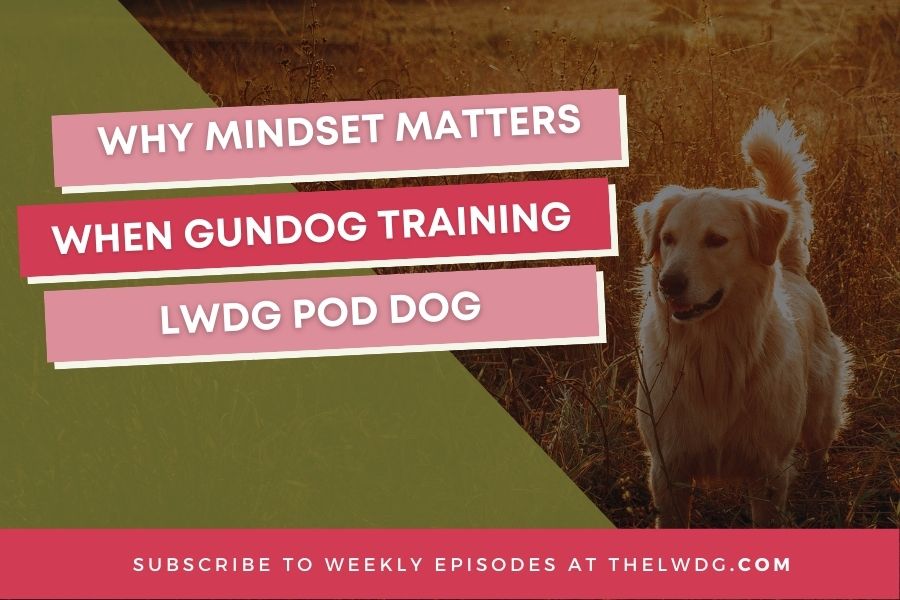



















 A huge thanks to our National Regional Coordinator for her generosity and for putting together goodie bags which included LWDG badges, stickers,
A huge thanks to our National Regional Coordinator for her generosity and for putting together goodie bags which included LWDG badges, stickers, 











